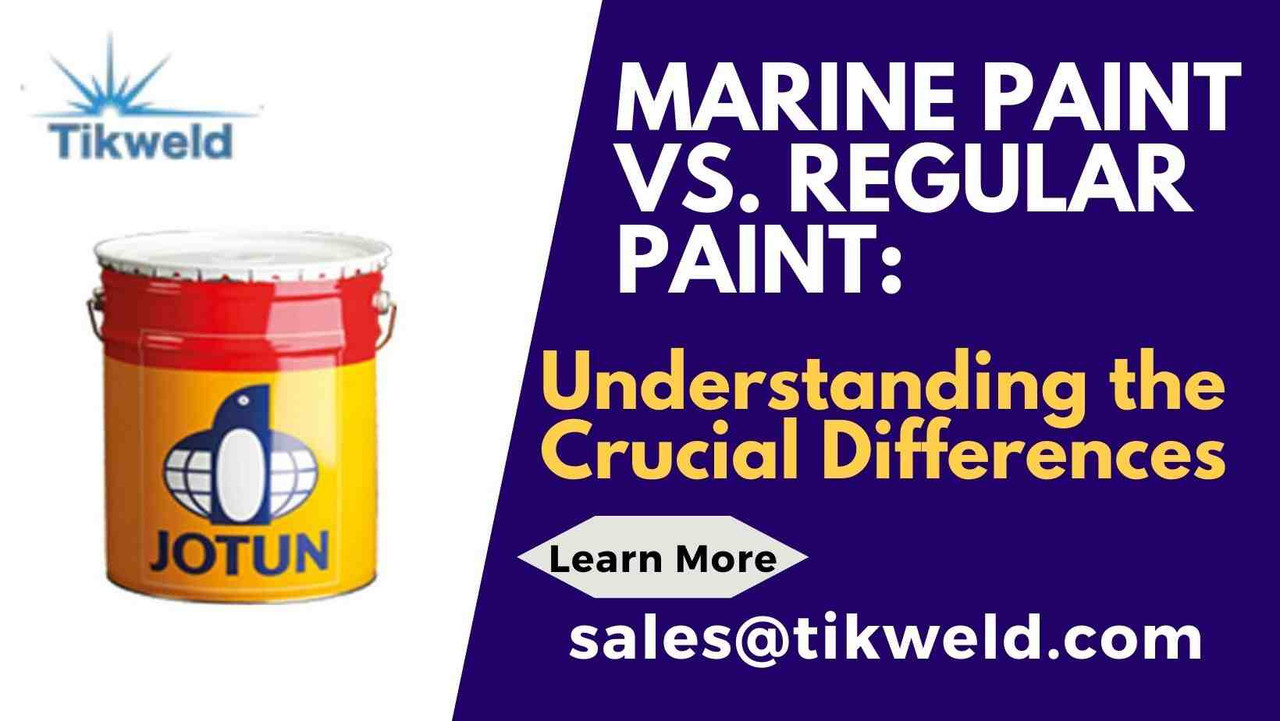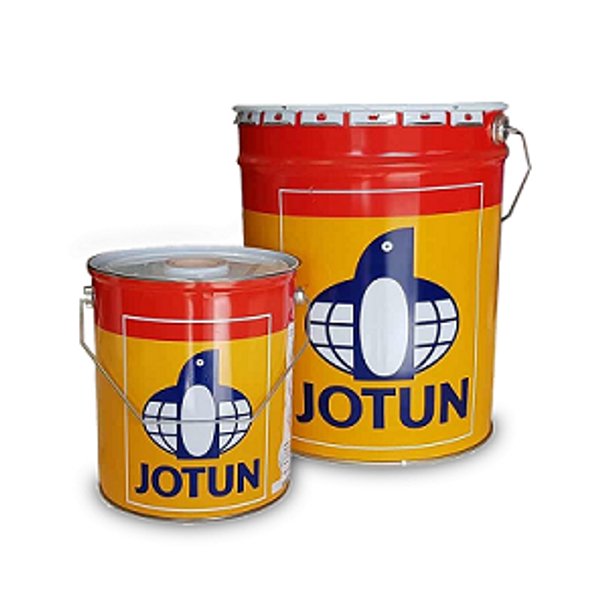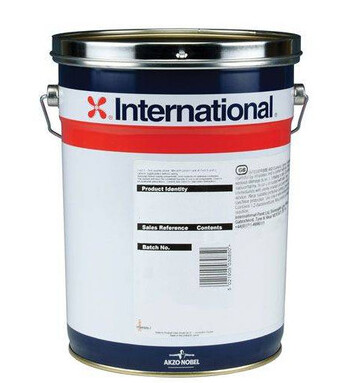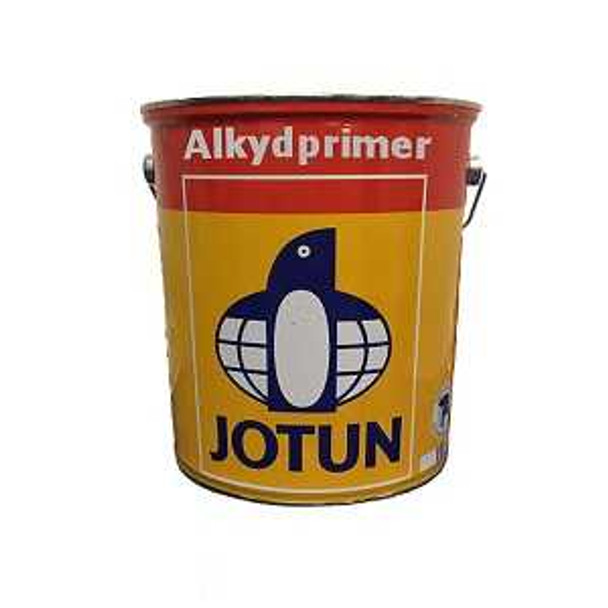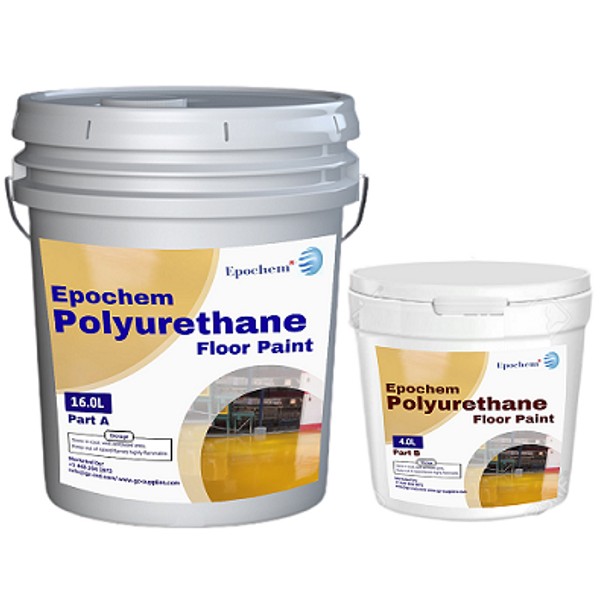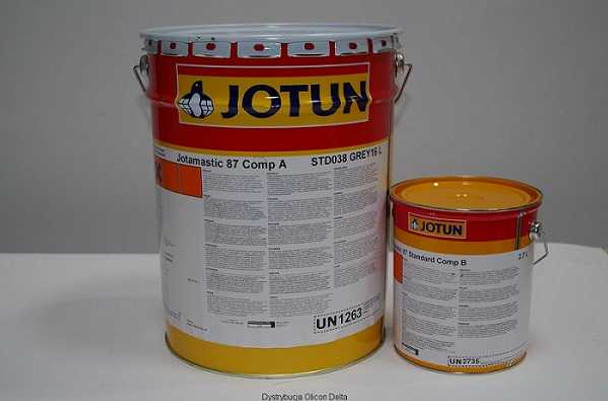Marine Paint vs. Regular Paint: Understanding the Crucial Differences
Paint plays a crucial role in various industries and applications, serving both functional and aesthetic purposes. It provides protection, enhances durability, and adds visual appeal to a wide range of surfaces, from buildings and infrastructure to automobiles and consumer goods. The right choice of paint can significantly impact the longevity and performance of these objects, making it an essential consideration in many industries.
Buy Online... Jotun marine paint hardtop clear AS
One particular area where paint takes on special significance is in the maritime industry. Marine paint, also known as boat or ship paint, is specifically designed to meet the unique challenges posed by marine environments. Vessels, structures, and equipment operating in marine settings are subjected to harsh conditions, including exposure to saltwater, UV radiation, temperature fluctuations, and constant moisture. These factors can cause corrosion, fouling, and other forms of damage, making the selection of appropriate paint crucial for their protection and longevity.
Marine paint differs significantly from regular paint due to its unique characteristics, formulation, and purpose. Understanding these differences is vital for anyone involved in the maritime industry, including boat owners, shipbuilders, naval architects, and maintenance personnel. By recognizing the distinct requirements and challenges of marine environments, individuals can make informed decisions regarding the choice, application, and maintenance of marine paint, ensuring optimal performance and durability for vessels and structures.
Definition and Composition of Marine Paint
A. Explanation of marine paint and its purpose
Marine paint, also known as boat or ship paint, is a specialized type of coating designed specifically for use in marine environments. Its primary purpose is to protect marine vessels, structures, and equipment from the harsh conditions and challenges posed by saltwater, UV radiation, temperature fluctuations, and constant moisture.
Marine paint serves multiple functions beyond aesthetics. It acts as a barrier, providing a protective layer between the substrate (such as steel, aluminum, or fiberglass) and the corrosive elements present in the marine environment. It helps prevent corrosion, fouling, and damage caused by factors such as water, chemicals, abrasion, and marine organisms. Additionally, marine paint can enhance the vessel's hydrodynamics by reducing friction and improving fuel efficiency.
B. Overview of the composition and key components of marine paint
Marine paint consists of a carefully formulated combination of ingredients that provide the desired protective and performance properties. The composition may vary depending on the specific type and intended use of the paint, but some common components can be found in most marine paints:
1. Binders or resins:
These are the film-forming components of the paint that bind the pigment particles together and adhere to the substrate. Various types of resins are used in marine paint, including epoxy, polyurethane, and alkyd resins. Each resin type offers different characteristics in terms of durability, flexibility, adhesion, and resistance to chemicals and UV radiation.
2. Pigments:
Pigments are finely ground particles that provide color, opacity, and UV protection to the paint. In marine paint, pigments are carefully selected to offer not only aesthetic appeal but also enhanced resistance to fading and UV damage. They can include both organic and inorganic compounds.
3. Solvents:
Solvents are used to dissolve or disperse the resin and pigment particles, allowing the paint to be easily applied and spread onto the surface. Common solvents used in marine paint include mineral spirits, xylene, and toluene. However, the use of solvents is increasingly being reduced in favor of low-VOC (volatile organic compounds) or solvent-free formulations to comply with environmental regulations.
4. Additives:
Additives are incorporated into marine paint formulations to provide additional functionalities and properties. These can include anti-fouling agents to prevent the attachment of marine organisms, UV stabilizers to protect against sun damage, biocides to inhibit the growth of mold and algae, and thickeners to adjust the paint's viscosity for specific application methods.
The precise combination and proportion of these components in marine paint are carefully determined by paint manufacturers to achieve the desired performance characteristics and protection against the specific challenges posed by the marine environment. Different types of marine paint formulations are available, each tailored to address specific needs, such as below-waterline protection, topside durability, or anti-fouling properties.
Understanding the composition of marine paint is essential for selecting the appropriate type of paint for a particular application and ensuring its optimal performance in the marine environment. By choosing the right combination of binders, pigments, solvents, and additives, vessel owners, shipbuilders, and maintenance professionals can provide long-lasting protection and maintain the aesthetics of marine structures and equipment.
Learn more: How To Use Marine Paints
Buy Online... International Paint Interbond 201 20L
Key Differences between Marine Paint and Regular Paint
A. Environmental considerations
1. Exposure to saltwater and harsh marine conditions:
One of the primary distinctions between marine paint and regular paint lies in the exposure to saltwater and harsh marine conditions. Marine environments, such as oceans, seas, and saltwater bodies, pose unique challenges to painted surfaces. Saltwater is highly corrosive and can rapidly degrade unprotected surfaces, leading to rust, pitting, and structural damage. Marine paint is specifically formulated to withstand prolonged exposure to saltwater, offering superior corrosion resistance compared to regular paint.
2.Impact of UV radiation and temperature fluctuations:
Marine vessels and structures are constantly exposed to intense UV radiation from the sun, which can cause color fading, chalking, and surface degradation. Additionally, marine environments experience temperature fluctuations, ranging from extreme heat to freezing cold. Marine paint is designed to withstand these temperature variations without cracking, peeling, or losing its protective properties. It contains UV stabilizers that minimize UV damage, protecting the underlying substrate and maintaining the integrity of the paint film.
B. Protective properties
1. Corrosion resistance and anti-fouling capabilities:
The primary objective of marine paint is to provide robust protection against corrosion and fouling. Regular paint lacks the specialized properties necessary to combat the corrosive effects of saltwater. Marine paint formulations incorporate corrosion inhibitors and barrier properties to prevent the penetration of water, salts, and corrosive chemicals. Additionally, marine paint may contain anti-fouling agents, such as biocides, which deter the attachment and growth of marine organisms, such as barnacles, algae, and mollusks. This helps to maintain the vessel's hydrodynamics, reduce drag, and improve fuel efficiency.
2. Enhanced durability and adhesion:
Marine paint is engineered to withstand the demanding conditions encountered in marine environments. It exhibits enhanced durability and adhesion compared to regular paint. The formulation of marine paint allows it to withstand constant exposure to water, waves, moisture, and abrasive forces. It possesses excellent adhesion to various substrates commonly found in marine applications, including steel, aluminum, fiberglass, and wood. This ensures that the paint remains firmly bonded to the surface, even under challenging conditions, and provides long-lasting protection.
C. Specialized formulations and ingredients
1. Marine-specific additives and biocides:
Marine paint formulations incorporate specialized additives to enhance their performance in the marine environment. These additives can include biocides to inhibit the growth of marine organisms, such as barnacles and algae, on the submerged surfaces of vessels. By preventing fouling, marine paint helps to maintain vessel speed, fuel efficiency, and maneuverability. Additionally, marine paint may contain specific additives to improve resistance to water, chemicals, and UV radiation, ensuring prolonged protection against these damaging factors.
2. Resistance to moisture and humidity:
Marine environments are characterized by high levels of moisture and humidity, which can lead to paint degradation and blistering if not adequately addressed. Marine paint formulations are specifically designed to withstand these conditions, offering enhanced resistance to moisture and humidity. This prevents water penetration into the paint film, reducing the risk of blistering, delamination, and subsequent damage to the underlying substrate.
By considering these key differences, it becomes evident that marine paint is specifically engineered to provide robust protection against the unique challenges of the marine environment. Its corrosion resistance, anti-fouling capabilities, enhanced durability, adhesion, and specialized formulations make it the ideal choice for marine vessels, structures, and equipment. Understanding these distinctions is crucial for selecting the appropriate paint system and ensuring long-lasting protection in marine applications.
Buy Online... Jotun Marine Paint AlkydPrimer
Applications and Usage of Marine Paint
A. Marine vessels and structures
Marine paint finds extensive application in various marine vessels and structures due to its ability to provide durable protection against the challenging marine environment. Some common applications include:
1. Ships, boats, and yachts:
Marine vessels, ranging from large cargo ships and cruise liners to recreational boats and luxury yachts, require effective protection against corrosion, fouling, and weathering. Marine paint is applied to the hulls, superstructures, decks, and other exposed surfaces to safeguard them from the corrosive effects of saltwater, UV radiation, and constant exposure to the elements. It not only ensures the structural integrity and longevity of the vessels but also enhances their appearance.
2. Offshore platforms and structures:
Marine paint is also vital for protecting offshore structures, such as oil rigs, drilling platforms, and wind turbines, which are subjected to severe marine conditions. These structures face the combined challenges of saltwater corrosion, wave impact, moisture, and harsh weather. Marine paint provides a durable barrier against corrosion, extending the service life of offshore platforms and reducing maintenance costs. It also enhances safety by providing high visibility coatings and anti-slip surfaces.
B. Specific considerations for marine environments
1. Saltwater corrosion and fouling prevention:
One of the primary concerns in marine environments is the corrosion of metallic surfaces due to exposure to saltwater. Marine paint contains specialized corrosion inhibitors that form a protective barrier, preventing the penetration of saltwater and its corrosive ions. By acting as a sacrificial layer, marine paint helps to minimize corrosion, extend the lifespan of metal structures, and reduce maintenance and repair costs. Additionally, marine paint may incorporate anti-fouling properties to deter the attachment of marine organisms, reducing drag, improving fuel efficiency, and preventing damage to propulsion systems.
2. Impact of waves, moisture, and constant exposure:
Marine environments are characterized by the constant presence of waves, moisture, and high levels of humidity. These factors can accelerate the degradation of unprotected surfaces. Marine paint is designed to withstand the mechanical forces exerted by waves, providing impact resistance and preventing delamination or cracking. It also offers superior moisture resistance, preventing water penetration into the substrate and the subsequent damage associated with moisture-related issues, such as blistering and degradation of the paint film.
Furthermore, the continuous exposure to the marine environment necessitates the use of paint systems that can withstand harsh weather conditions, including strong winds, UV radiation, temperature fluctuations, and salt-laden air. Marine paint formulations are tailored to provide exceptional weatherability, ensuring long-term color and gloss retention while maintaining their protective properties.
In summary, marine paint is widely employed in marine vessels and structures to protect them from the corrosive effects of saltwater, fouling, wave impact, and constant exposure to moisture. Its application extends the lifespan of these assets, reduces maintenance requirements, enhances safety, and preserves their aesthetic appearance. The specific considerations for marine environments, such as saltwater corrosion prevention and the impact of waves and moisture, highlight the critical role of marine paint in ensuring the longevity and performance of marine vessels and structures.
Buy Online... Epochem Polyurethane Floor Paint
Benefits of Using Marine Paint
A. Longevity and durability
One of the primary benefits of using marine paint is its ability to enhance the longevity and durability of marine vessels and structures. Marine environments pose significant challenges, including exposure to saltwater, UV radiation, moisture, and constant mechanical stress from waves and harsh weather conditions. Marine paint is specifically formulated to withstand these challenges and provide long-lasting protection. Its durable coating acts as a barrier, preventing the penetration of corrosive substances and minimizing the risk of structural damage. By applying marine paint, vessel owners and operators can extend the lifespan of their assets, reducing the need for frequent repairs or premature replacements.
B. Protection against corrosion and fouling
Corrosion and fouling are major concerns in marine environments. Corrosion occurs when metals react with saltwater, leading to degradation, pitting, and eventual structural failure. Marine paint contains corrosion inhibitors that form a protective layer, preventing direct contact between the metal substrate and corrosive agents. This helps to minimize corrosion and maintain the structural integrity of marine vessels and structures.
Fouling, on the other hand, refers to the attachment and growth of marine organisms, such as barnacles, algae, and mollusks, on the submerged surfaces of vessels. Fouling can increase drag, reduce fuel efficiency, and impact the vessel's performance. Marine paint formulations often include anti-fouling properties, such as biocides, which deter the attachment and growth of these organisms. By using marine paint, vessel owners can reduce fouling, maintain optimal hydrodynamics, and improve fuel efficiency.
C. Cost-effectiveness in the long run
While marine paint may have a higher upfront cost compared to regular paint, its long-term cost-effectiveness becomes evident when considering the extended lifespan and reduced maintenance requirements it offers. By providing robust protection against corrosion, fouling, and weathering, marine paint minimizes the need for frequent repairs, replacements, and associated downtime. The investment in high-quality marine paint pays off in the form of reduced maintenance costs and increased operational efficiency over the vessel's lifespan.
D. Compliance with environmental regulations
In recent years, environmental regulations have become increasingly stringent, aiming to reduce the environmental impact of marine activities. Marine paint manufacturers have responded by developing eco-friendly formulations that comply with these regulations. Low-VOC (volatile organic compounds) and non-toxic marine paint options are now available, minimizing harmful emissions during application and contributing to a healthier marine ecosystem. By using environmentally compliant marine paint, vessel owners and operators can fulfill their environmental responsibilities while maintaining effective protection for their assets.
In conclusion, the benefits of using marine paint are numerous and significant. Its ability to enhance the longevity and durability of marine vessels and structures, protect against corrosion and fouling, provide cost-effectiveness in the long run, and comply with environmental regulations make it the ideal choice for marine applications. By investing in high-quality marine paint and applying it correctly, vessel owners and operators can ensure the prolonged lifespan, reduced maintenance, improved performance, and environmental sustainability of their assets.
Buy Online... Jotun marine paint Jotamastic 87 AL Standard
Related Articles
The Best Marine Paints and coatings for Metal surfaces
Marine Paint vs. Regular Paint: Understanding the Crucial Differences
10 Essential Tips for Choosing the Right Marine Paint for Your Boat
Conclusion
It is important to recognize the significant differences between marine paint and regular paint. Marine paint is specifically formulated to withstand the harsh conditions of marine environments, offering superior protection against corrosion, fouling, UV radiation, temperature fluctuations, and constant exposure to saltwater. Its specialized composition, additives, and durability make it the ideal choice for marine vessels and structures. Regular paint, on the other hand, lacks the specific properties required to provide long-lasting protection in marine applications. It may not have the same level of corrosion resistance, anti-fouling capabilities, or adhesion strength as marine paint. Understanding these distinctions is crucial for selecting the right type of paint and ensuring optimal performance and protection for marine assets.
Marine environments present unique challenges that can have a detrimental impact on the longevity and performance of vessels and structures. Saltwater corrosion, fouling, wave impact, and constant exposure to moisture and UV radiation can all cause significant damage. By understanding the unique requirements of marine environments, vessel owners and operators can make informed decisions when it comes to selecting the appropriate paint system.
Investing in high-quality marine paint, conducting proper surface preparation, following recommended application techniques, and implementing regular maintenance and inspection schedules are all key factors in maximizing the benefits of marine paint. By doing so, vessel owners can enhance the durability, longevity, and efficiency of their assets while minimizing the risk of corrosion, fouling, and other forms of degradation.
In conclusion, understanding the differences between marine paint and regular paint, recognizing the unique requirements of marine environments, and utilizing marine paint for marine applications are vital steps in protecting and preserving marine vessels and structures.

